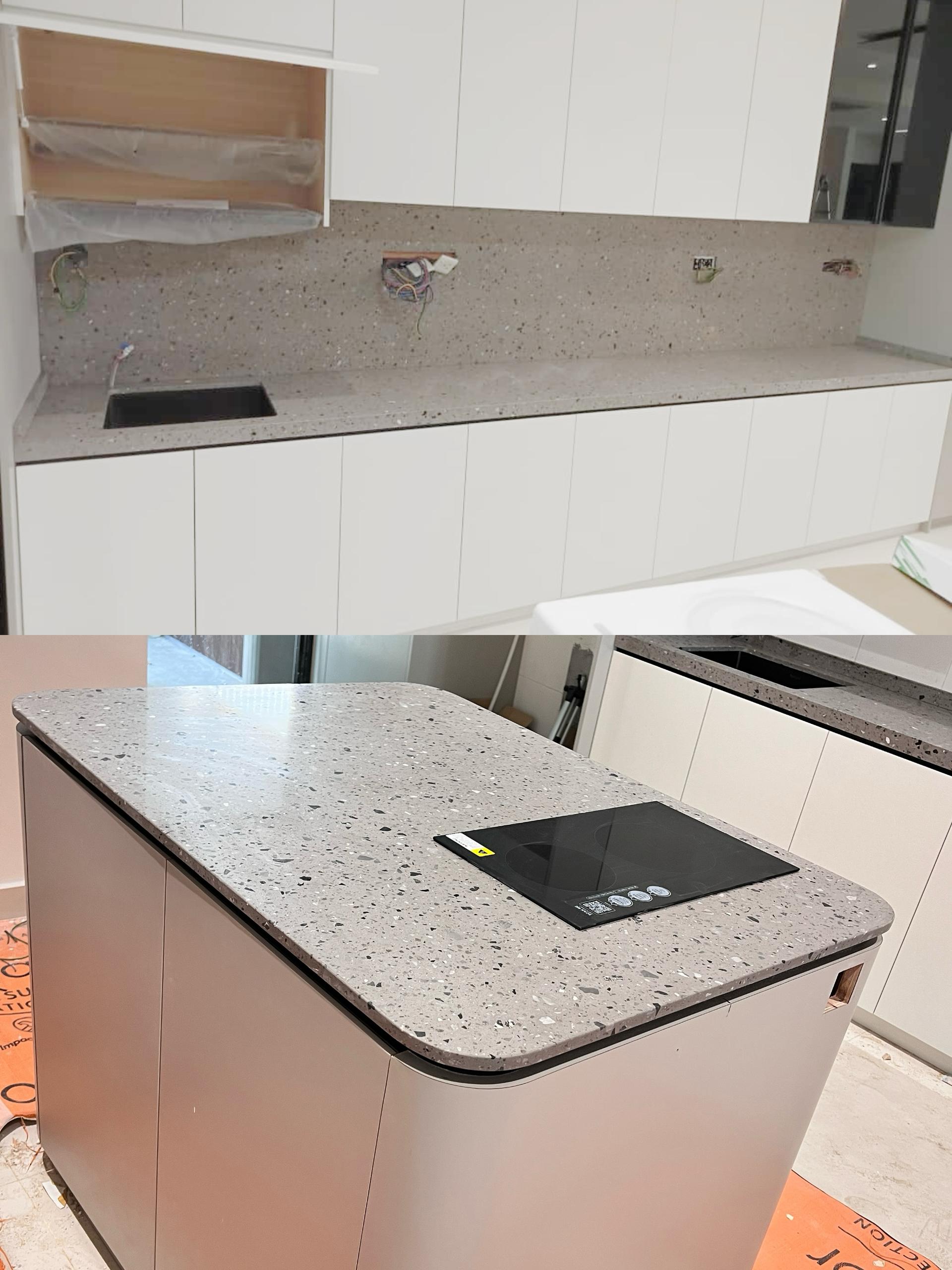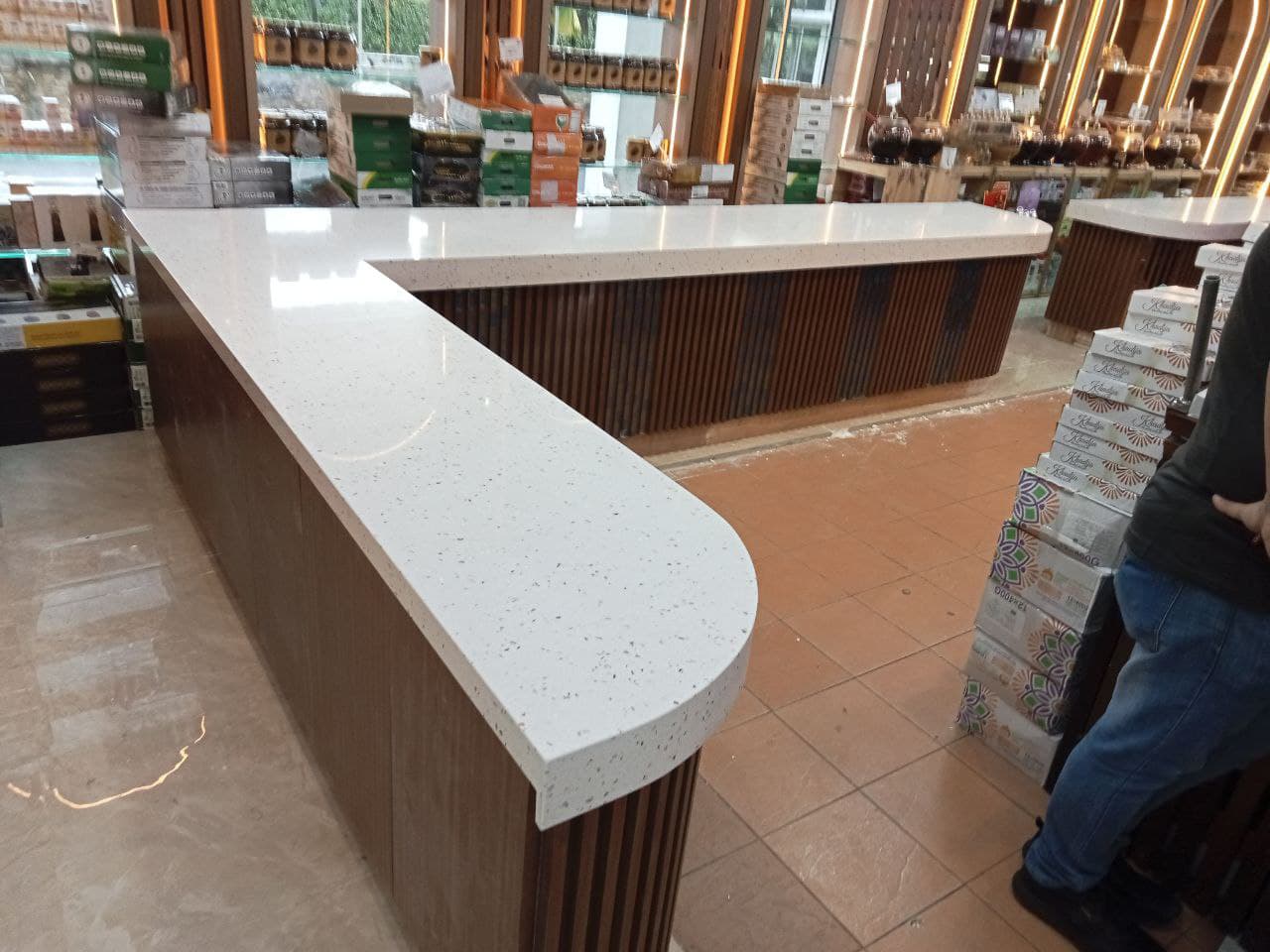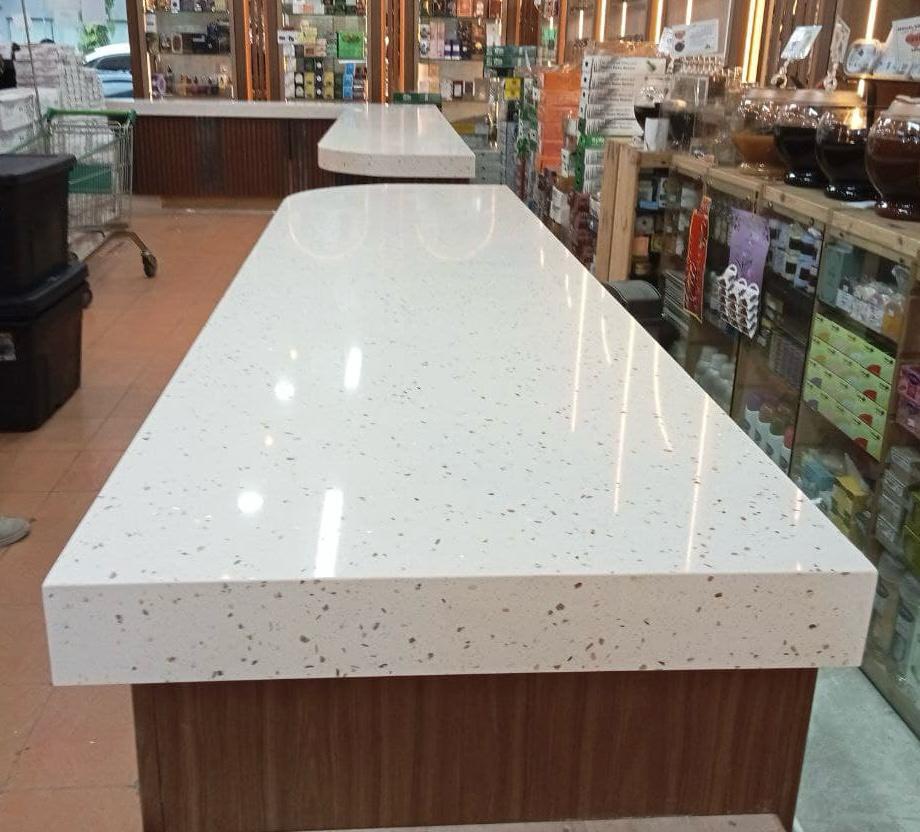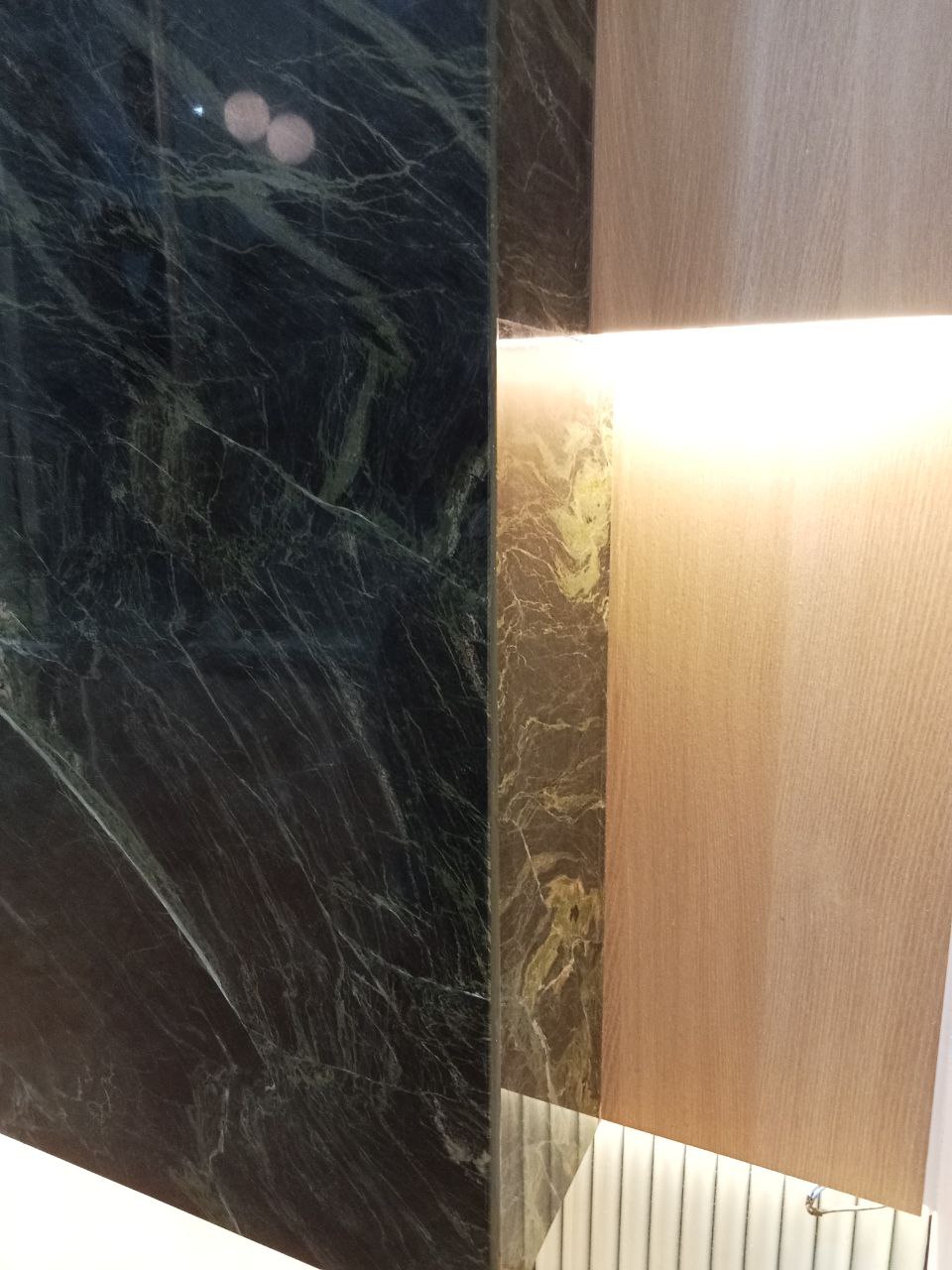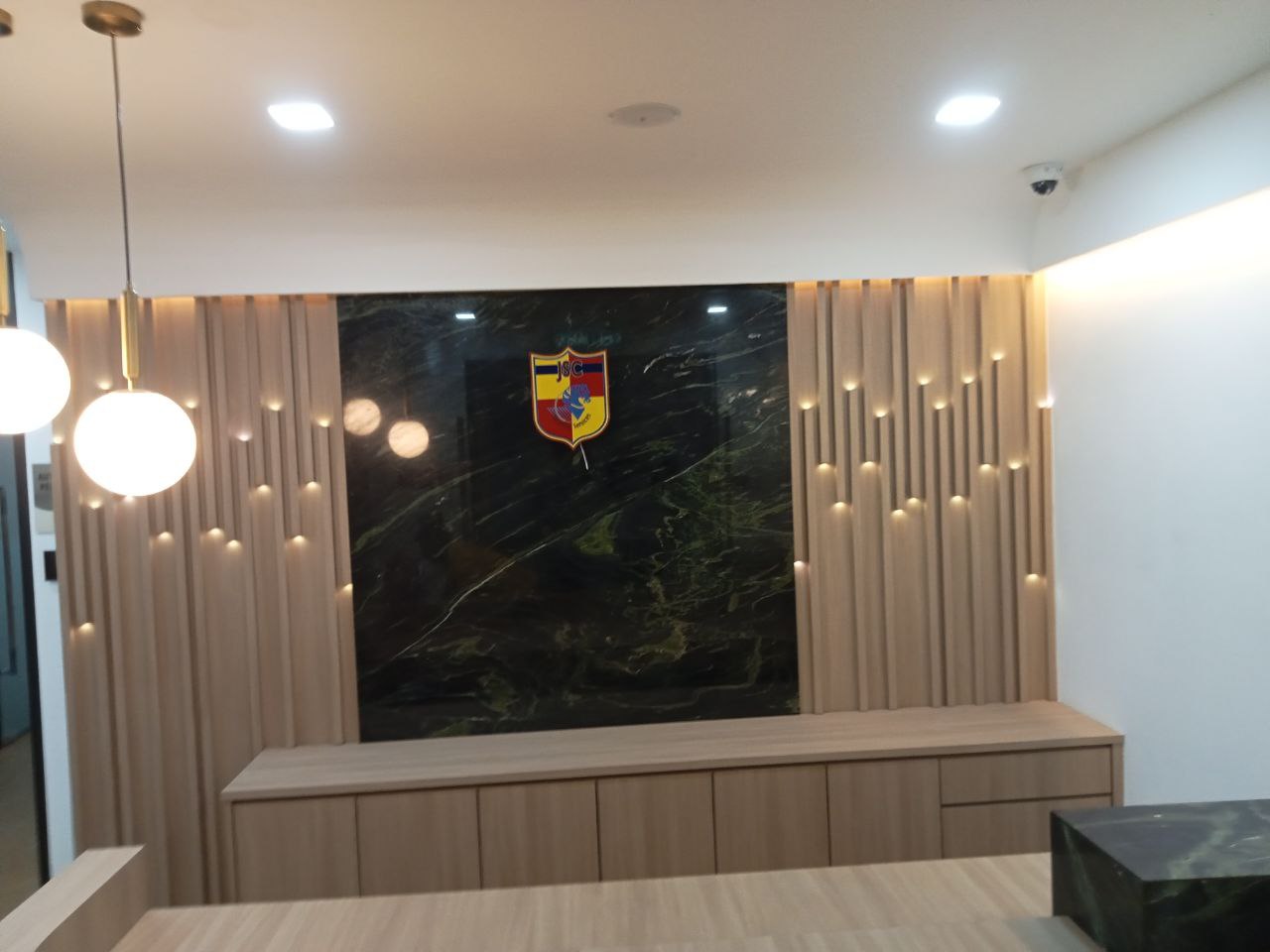
In summary, premium Marble Quartz surfaces—ranging from striking compress marble reception counters to inviting quartz stone lounges and functional quartz stone meeting room tables—are shaping modern workspaces. Compress marble counters make a memorable first impression with their sculptural forms and durability. Quartz lounges blend comfort and resilience, offering stain‑resistant surfaces ideal for high‑traffic breakout areas. Quartz meeting tables promote collaboration and long‑term performance, with engineered surfaces that resist scratching and bacterial growth. Backed by a one‑stop supply chain and rapid response times, our brand delivers turnkey Marble Quartz solutions that align with sustainability goals and flexible service models—ensuring every corporate installation is efficient, eco‑friendly, and on‑brand.
A Legacy of Innovation
Crafting Timeless First Impressions
For nearly two decades, our passion for Marble Quartz has driven us to redefine reception spaces with cutting‑edge compress marble reception counters. By mastering compression technology—melding marble aggregates under extreme pressure and heat—we produce counters that are not only visually stunning but also exceptionally robust. These bespoke reception pieces cultivate an unforgettable first impression, reflecting your company’s heritage of excellence. Our in‑house design studio collaborates directly with clients, ensuring every sculptural curve and monolithic slab aligns with corporate aesthetics and branding goals. This deep commitment to innovation, combined with our direct factory model, allows us to maintain competitive pricing without compromising on quality. As pioneers in engineered stone, we continue to invest in R&D, adopting the latest CNC machining and surface‑treatment processes to elevate the compress marble reception counter into an art form—one that welcomes guests with elegance and durability.
Why Office Countertops Matter More Than You Think
Beyond Aesthetics – The Role of Surfaces in Workplace Efficiency
Office countertops are more than just functional surfaces—they shape productivity, reflect brand identity, and influence employee morale. A well-designed workspace with durable, stylish countertops can reduce distractions and foster creativity. Studies show that employees in aesthetically pleasing environments report 15% higher job satisfaction. But how do you choose the right material? The answer lies in balancing durability, maintenance, and design versatility. For example, natural stone like granite offers timeless elegance, while quartz provides a low-maintenance alternative.
Question: Why invest in high-quality office countertops?
Answer: Quality countertops enhance durability, reduce long-term replacement costs, and create a professional atmosphere that aligns with your company’s values.
Transformative Reception Spaces
Sculptural Design Meets Practical Performance
A reception area sets the tone; a compress marble reception counter becomes both a functional desk and a dramatic focal point. Compress‑marble technology produces ultra‑dense surfaces that resist chipping, staining, and impact—perfect for high‑traffic entryways. Our signature counters range from minimalist white blocks to textured finishes that evoke natural stone, allowing seamless integration with your lobby’s architectural language. Beyond aesthetics, we reinforce every installation with steel‑subframes and precision anchoring to ensure long‑term stability. Whether your lobby demands a floating cantilever or an L‑shaped welcome desk, our expert installers can handle complex layout requirements with millimeter‑level accuracy. By combining bespoke design with industrial‑grade durability, our compress marble reception counters not only captivate visitors but also stand up to daily wear—ensuring your brand’s entrance remains as impressive on day 1,000 as on day one.
Best Materials for Office Countertops
Granite, Quartz, and Solid Surface – Which Reigns Supreme?
When selecting materials, prioritize durability and ease of maintenance. Granite is a natural stone prized for its heat resistance and unique veining, though it requires annual sealing. Quartz, an engineered stone, is non-porous and scratch-resistant, ideal for high-traffic offices. Solid surface materials like Corian® offer seamless designs and easy repairs, perfect for collaborative spaces.

Elevated Lounge Areas
Comfort, Style, and Quartz Stone Lounge Innovation
Breakout zones and lounges demand surfaces that invite relaxation yet endure daily use. Enter the quartz stone lounge—engineered quartz slabs tailor‑cut into communal tables, low bars, and side consoles that resist stains, bacteria, and scratches. With non‑porous characteristics, quartz requires no sealing and provides a hygienic, easy‑clean finish ideal for coffee spills or catered events. Design options include waterfall edges, integrated LED light channels, and flush‑mount receptacles, enabling lounges to double as collaborative hubs or casual meeting spots. Color and pattern selection draw from top trends—from warm, earthy hues to bold, veined styles—ensuring each quartz stone lounge complements furniture palettes. By leveraging our direct‑to‑project supply chain, we guarantee rapid prototyping and on‑time installation, turning your vision of an inviting lounge into a reality that boosts employee wellness and brand cohesion.
Engaging Meeting Spaces
Functional Quartz Stone Meeting Room Tables
Meeting rooms deserve surfaces as professional as the people who gather around them. Quartz stone meeting room tables provide a perfect blend of elegance and practicality: scratch‑resistant, heat‑tolerant, and impervious to coffee‑stain mishaps. We engineer custom table tops in sizes from 6‑foot executive boards to modular 3‑by‑3 foot pods, accommodating collaborative sessions or formal presentations. Integrated wire‑management channels and pop‑up power modules ensure technology needs are discreetly met without compromising the table’s sleek profile. Choose from honed, polished, or leathered finishes to define the room’s tone—whether it be a glossy, high‑end aesthetic or a subtler, tactile experience. By constructing these tables with precision‑cut Marble Quartz cores and matching edge profiles, we deliver uniform thickness and consistent veining, enhancing visual harmony throughout your meeting spaces.
Material Matters – Marble Quartz Advantages
Why Marble Quartz Reigns Supreme
Marble Quartz combines natural marble’s signature veining with engineered quartz’s superior durability. Unlike pure marble, it resists etching and staining—ideal for corporate environments where surfaces face frequent use. Its non‑porous composition minimizes bacterial growth and simplifies maintenance, reducing cleaning costs and downtime. Using up to 93% natural stone aggregates bound by high‑performance resin, Marble Quartz slabs achieve hardness ratings comparable to quartzite, outpacing granite in resistance to chips and scratches. Available in hundreds of colors and patterns—including marble replicas, concrete‑looks, and bold veining—it offers design flexibility for reception counters, lounges, meeting tables, and beyond. This engineered surface delivers a low‑maintenance, high‑performance solution that embodies both luxury and resilience—making Marble Quartz a standout choice for forward‑thinking workplaces.
Design & Durability
Balancing Aesthetics with Long‑Term Performance
In office contexts, durability is as critical as appearance. While marble conveys timeless elegance, its softness can lead to scratches and etching from acidic spills. Engineered quartz—including Marble Quartz—offers a middle ground: the look of marble with superior hardness and stain resistance. Our compress‑marble counters undergo densification processes that boost impact resistance by up to 40%, while CNC‑cut quartz edges maintain consistent profiles for years of use. All surfaces receive a final quality audit—measuring flatness to within 0.5 mm and verifying resin content for uniform strength. This rigorous approach ensures each compress marble reception counter, quartz stone lounge, and quartz stone meeting room table delivers both irresistible style and industrial‑grade reliability.

Sustainability & Wellness
Green Credentials for Healthier Workplaces
As clients prioritize ESG goals, our Marble Quartz offerings incorporate up to 40% post‑consumer recycled content, minimizing environmental impact. Sintered porcelain lounge tops and compress marble reception counters. Terrazzo variants harness locally sourced aggregates, cutting transportation emissions and supporting circular‑economy practices. These eco‑friendly surfaces pair beautifully with biophilic design elements—living green walls, natural light optimization, and ergonomic seating—to foster employee well‑being and productivity. By selecting sustainable materials without compromising on style or durability, companies can demonstrate corporate responsibility while cultivating inspiring, health‑focused environments.
One‑Stop Shop
Simplifying Lives with End‑to‑End Service
Coordinating suppliers, fabricators, and installers can derail timelines and inflate budgets. Our vertically integrated model manages everything—from quarry to installation—for compress marble reception counters, quartz stone lounges, and quartz stone meeting room tables. In‑house logistics reduce lead times by up to 30%, while consolidated quality control ensures consistent standards at every stage. Transparent, all‑inclusive quotes eliminate hidden fees, and dedicated project coordinators provide real‑time updates via our client portal. Whether you opt for design‑only, fabrication‑plus‑install, or installation‑only, our flexible service packages are tailored to fit any project scope. The result? A frictionless experience that lets you focus on core business objectives while we transform your workspace with premium Marble Quartz surfaces.
Rapid Response & Support
Agility for Today’s Fast‑Paced Workplaces
Office rollouts can’t wait. We guarantee detailed quotes within 24 hours and can expedite urgent orders in just 72 hours—custom patterns included Pinterest. Our rapid‑response team leverages automated templating and on‑site laser measurement to slash approval cycles. State‑of‑the‑art CNC machining delivers repeatable precision, so your compress marble reception counter or quartz stone lounge arrives ready for seamless install. Post‑installation, our support team stands by with a 10‑year warranty on all Marble Quartz products, covering delamination and manufacturing defects. With round‑the‑clock customer service and on‑demand maintenance kits, we ensure your surfaces remain pristine—supporting uninterrupted operations in high‑traffic corporate settings.

Let’s Build Your Brand
Inspiring Spaces that Reflect Your Vision
Every workspace tells a story. With our compress marble reception counters, quartz stone lounges, and quartz stone meeting room tables, you can create environments that embody your brand’s ethos—whether it’s modern minimalism, bold innovation, or sustainable stewardship. Our collaborative design process incorporates mood‑board workshops, 3D renderings, and physical sample reviews to ensure final surfaces resonate with your corporate identity. From material selection to installation choreography, we guide you every step of the way—merging functional requirements with aesthetic ambitions. Reach out today for a complimentary consultation and sample kit. Together, we’ll craft Marble Quartz solutions that not only elevate your office’s visual impact but also enhance productivity, well‑being, and brand loyalty.
Top 2025 Trends in Office Countertop Design
Bold Colors, Textured Finishes, and Sustainable Choices
2025 trends emphasize personality and sustainability:
- Nature-Inspired Neutrals: Warm taupes and terracotta create calming environments.
- Bold Veining: High-contrast marble-like patterns make statements in reception areas.
- Recycled Materials: Porcelain and reclaimed wood align with eco-conscious branding.
- Matte Finishes: Reduce glare for a modern, professional look.
Question: Are textured countertops practical for offices?
Answer: Yes! Leathered or honed finishes hide fingerprints and add sophistication.
Designing for Collaboration: Countertop Layouts
From Solo Desks to Open-Plan Workspaces
Open-plan offices benefit from L-shaped countertops that maximize space, while private offices may opt for minimalist floating designs. Integrate power outlets and wireless charging zones into countertops for tech-friendly workspaces.
Question: How can countertops improve teamwork?
Answer: Large islands with seating encourage impromptu meetings, blending functionality with style.
Maintenance Tips for Long-Lasting Countertops
Protect Your Investment with Simple Care Routines
- Granite: Clean with pH-neutral soap; reseal annually.
- Quartz: Avoid abrasive cleaners and prolonged heat exposure.
- Solid Surface: Buff minor scratches with a mild abrasive.
Question: Can you repair scratches on quartz?
Answer: Yes—professional polishing restores surfaces, but prevention is key
Color Psychology in Office Design
How Countertop Hues Impact Productivity
Cool tones like gray and blue enhance focus, while warm neutrals foster creativity. For branding, match countertops to company colors—e.g., deep green for eco-friendly businesses.
Question: Do dark countertops make spaces feel smaller?
Answer: Not necessarily! Pair dark surfaces with ample lighting to maintain openness
Budget-Friendly Alternatives Without Sacrificing Style
Laminate and Butcher Block – Smart Choices for Startups
Laminate countertops offer affordability and realistic stone patterns. Butcher block adds warmth but requires frequent sealing.
Question: Is laminate durable enough for offices?
Answer: Yes—modern laminates resist stains and mimic high-end materials effectively.
Integrating Technology into Countertops
Smart Surfaces for the Modern Workplace
Embed wireless charging pads, USB ports, or LED lighting into countertops for a futuristic edge. Porcelain countertops with integrated tech are heat-resistant and sleek.
Question: Are tech-enabled countertops expensive?
Answer: Costs vary, but modular designs allow gradual upgrades.
Case Study: Transforming a Corporate Office with Quartz
A Real-World Example of Function Meets Design
A tech startup upgraded to quartz countertops with matte finishes, reducing maintenance time by 30% and impressing clients with its polished aesthetic.
Question: How long does quartz installation take?
Answer: Professional installers typically complete projects in 3–7 days.
Future-Proofing Your Office: Timeless vs. Trendy
Choosing Designs That Stand the Test of Time
While bold trends are tempting, classic materials like granite and quartzite ensure longevity. Pair them with interchangeable decor (e.g., plants, artwork) for flexibility.
Question: Can I mix materials for a custom look?
Answer: Absolutely! Combine quartz islands with wood accents for contrast

FAQ: Office Countertop Essentials
- What is the best countertop for office?
Granite, quartz, and solid surface materials like Corian® offer durability and style. - How often should I seal granite countertops?
Annually, to prevent stains and maintain shine. - Are porcelain countertops suitable for heavy use?
Yes—they’re heat-resistant and eco-friendly, ideal for busy offices. - What’s the average lifespan of quartz countertops?
With proper care, quartz lasts 20+ years. - Can I install office countertops myself?
Professional installation is recommended for precise fitting and durability.
For more trends and tips, explore our sources or contact a design expert! 🌟












